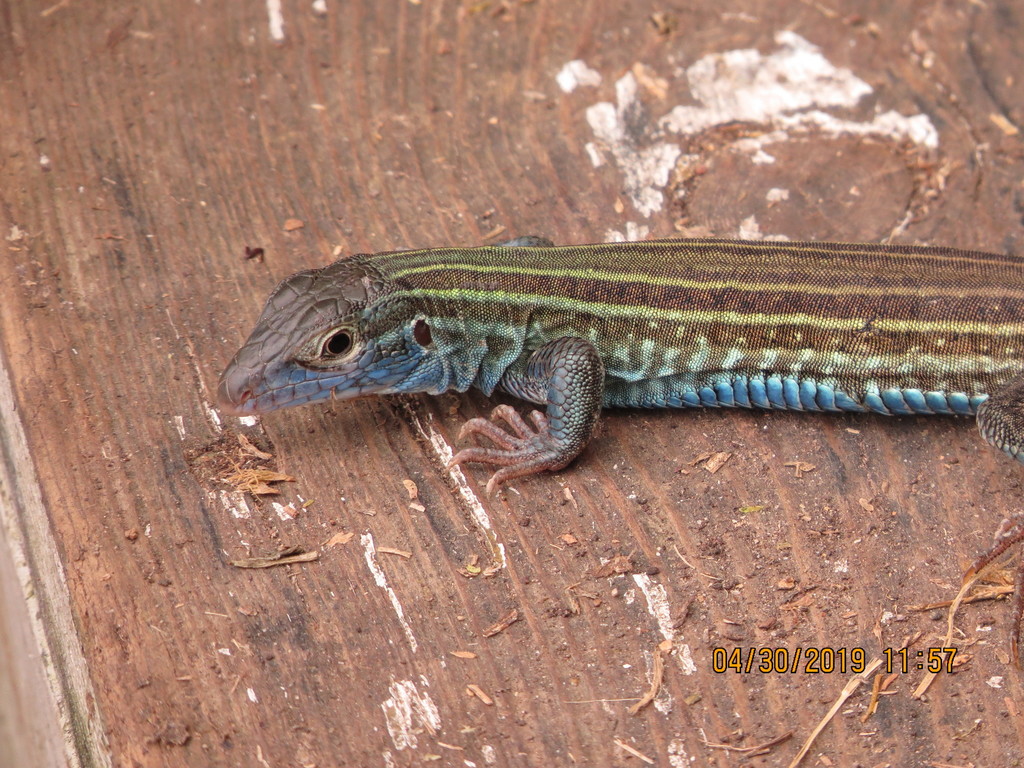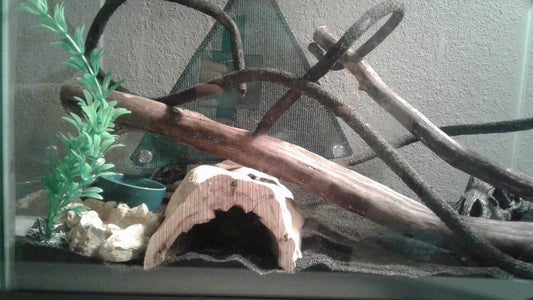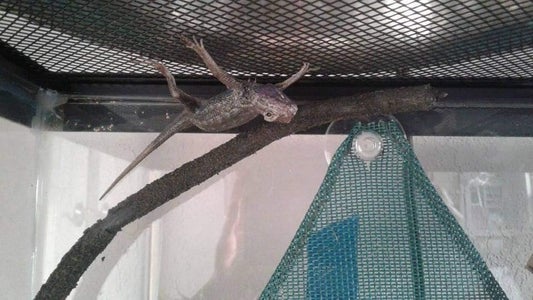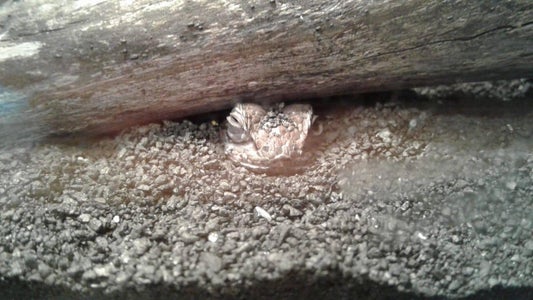Lizards with bright blue patches or full bellies are some of the most vibrant and eye-catching reptiles in North America. Their flashy undersides stand out against drabber upper body coloration. Seeing a dash of azure on an otherwise earth-toned lizard often elicits excitement from observant hikers and backyard wildlife watchers.
If you’ve spotted a lizard with blue on its belly and are wondering what it is, this guide covers key facts and identification tips. We’ll explore 13 species ranging across the United States and into Mexico.
Why Do Some Lizards Have Blue Bellies?
Blue belly coloration occurs mostly in adult male lizards. It is less commonly seen in females and juveniles.
These patches are thought to play a role in mating displays. The brighter the blue, the more attractive a male may appear to females. Blue bellies are also used in aggression displays towards competing males.
Some lizards can voluntarily intensify the color to stand out. Increased blood flow to the scales elevates the blue hue. This helps broadcast dominance and fitness during the breeding season.
Western Fence Lizard
The western fence lizard is one of the most widespread blue belly lizards in the western United States. They live from Baja California up to Washington state.
These lizards reach 5-9 inches in length. Their backs are brown or black with white and black stripes. The belly and throat of mature males turns a vibrant blue Yellow lower limb coloration provides an eye-catching contrast
Western fence lizards thrive in varied habitats from forests to backyards. They readily adapt to suburbia but need rocks, logs, and other refuges When threatened, they often scamper up fences, trees, and walls
Sagebrush Lizard
The sagebrush lizard inhabits the Great Plains and adjoining western states Their range stretches from Canada down into Mexico.
Adults reach approximately 4 inches long. Base coloration consists of greys, tans, and olive greens. Dark brown or black shoulder bars help differentiate them from similar fence lizards.
Mature male sagebrush lizards develop small blue patches on their bellies and throats. These are not as vivid or extensive as the western fence lizard. Sagebrush lizards live in arid shrublands and rocky outcrops.
Eastern Fence Lizard
Contrary to its name, the eastern fence lizard primarily lives in the southeastern United States. Isolated populations roam as far north as New Jersey.
These lizards grow up to 8 inches long. Female eastern fence lizards are tan and grey with a pale underside dotted with black flecks. Some have hints of blue on their throat or belly.
Males turn brown in summer with vivid blue-green sides, throats, and abdomens. They have keeled scales running along their backs. Look for eastern fence lizards perching on logs, stumps, and boulders.
Desert Spiny Lizard
The desert spiny lizard inhabits the Sonoran and Chihuahuan deserts. Their range extends from California and Arizona down into Mexico.
As the name suggests, these lizards are spiky in appearance. Their backs sport white, yellow, or brown triangular patterns outlined in black. Mature males develop blue and violet coloration on their throats, bellies, and tail bases.
Desert spiny lizards reach approximately 6 inches long. They have chunky bodies and long tails. Slow and deliberate movement helps them blend into desert scrub habitat.
Other North American Lizards With Blue Bellies
Beyond those main 4 species, there are 9 other lizards across North America exhibiting some degree of blue belly coloration:
- Texas spiny lizard
- Crevice spiny lizard
- Graphic spiny lizard
- Yarrow’s spiny lizard
- Plateau spotted whiptail
- Little striped whiptail
- Six-lined racerunner
- Texas spotted whiptail
- Zebra-tailed lizard
These species span the southern United States and Mexico in assorted arid and semi-arid habitats. They range from 3-13 inches long. Most display small blue belly patches rather than full vibrant undersides.
Identifying Blue Belly Lizards
When attempting to identify a lizard with blue on its belly, consider the following key characteristics:
- Location – What part of the continent was it spotted in? Most species have defined ranges.
- Size – Length can help narrow options.
- Scales – Smooth? Keeled? Triangular patterns?
- Body shape – Stocky, slender, spikes, or smooth?
- Blue extent – Full belly or small throat patches?
- Leg color – Many have yellow limbs.
- Habitat – Forest, desert, grassland? Site helps ID species.
Consult field guides or online photo databases if you need assistance. With practice, identification becomes quicker and easier.
Observing Blue Belly Lizards
Lizards with blue undersides make great wildlife viewing. Their coloration provides a memorable pop of vibrancy.
During breeding seasons, watch for territorial displays between males involving push-ups to showcase their blue bellies. You may catch a female checking out potential mates as well.
Approach slowly and quietly if attempting to photograph these lizards. They startle easily and will quickly dart for cover. Patience and persistence are key to getting close encounters.
If you’ve been wondering “what lizard has a blue belly?”, hopefully this guide has answered that question and provided key ID tips. Now you’ll know what to look for the next time you spot a dash of blue scurrying amidst the undergrowth. Happy lizard watching!

Step 6: Climbing Things

Now we put in some fun things. These are basically the equivalent of lizard toys. Your lizards will play and have fun on them. There are many different types of things lizards can climb on such as: reptile vines, lizard ladders, reptile hammocks, and more. I have added a lizard ladder and a reptile vine that was actually meant for chameleons but Im giving it to my lizards. If you get a lizard ladder or a reptile hammock, these would usually go on the warm end. That way they can get up higher and closer to the heat lamp if they need to.
Introduction: How to Care for a Blue Belly Lizard

Ah, the Blue Belly lizard. Probably one of the most beautiful lizards I know of (and I know of a lot)! I have two adorable Blue Bellies named Jumpy and Lumpy. They are my little babies. Today Im going to be telling you what you need, how to put together the cage, and daily care. So lets get started and jump right in!

Here is what you are going to need for your Blue Belly:
- A 10 gallon tank
- A 10 gallon screen top
- A substrate (If you dont want sand you can get a reptile carpet)
- A hiding place (If you dont want to buy one click HERE to see an instructable to make one)
- A basking rock or branch
- A water dish
- A treat dish
- A sand sifter (This is to sift out the lizard poo if you have sand)
- Another small cage (To put your lizard in when youre cleaning)
- Climbing things (Such as reptile vines, lizard ladders, or reptile hammocks)
- A heat lamp
- A UV lamp (Please read all the way through before buying this)
- A heat bulb
- A UV bulb (Again please read through!)
- A thermometer (You can get special reptile thermometers)
- A cricket keeper
- Waxworms
- Mealworms
- Crickets
All of these items can be found on this website: https://zoomed.com
Fence Lizard Facts: the BLUE BELLY Lizard | Animal Fact Files
FAQ
Are blue-belly lizards venomous?
-
This is the common name for the blue-belly lizard, and they are native to western North America, including California.
-
Not Venomous:They are cold-blooded reptiles with dry, scaly skin that lay eggs and are not poisonous or venomous.
-
Bite:While their bite can hurt, it is not poisonous or venomous.
-
According to the Lompoc Record, they have a protein in their blood that kills the bacteria that causes Lyme disease.
-
The only venomous lizard in the United States is the Gila monster, which is found in the desert regions of the southwest.
What kind of lizard has a blue-belly?
-
Appearance:Adult male Western fence lizards are recognizable by their bright blue belly and throat patches, while females and younger males have less vibrant coloration.
-
Habitat:They are found in a variety of habitats, including rocky areas, woodlands, and around fences, as their name suggests.
-
Diet:They are insectivores, feeding on a variety of small insects and spiders.
-
Behavior:Males display their blue bellies during breeding season as a territorial display.
-
RangeThe western fence lizard is found in Arizona, California, Idaho, Nevada, Oregon, Utah, Washington, and Northern Mexico.
Can I pick up a western fence lizard?
If you do manage to grab one—they are super quick so it isn’t easy—it might bite you in self-defense. Western fence lizards should not be captured and kept as pets. Although it is legal to do so with a permit, they belong outside and most cannot survive the transition.
Can you keep a blue belly lizard as a pet?
-
Not ideal for pets:While it’s not illegal to keep them, they are not recommended as pets for several reasons. They are not very hardy and can be difficult to keep happy and healthy in a captive enclosure.
-
Difficult to handle:They can bite, and their bite isn’t poisonous but can be painful. They are also not very social and may not be as interactive as some other pet reptiles.
-
Specific care requirements:They need a specific temperature range, a suitable diet, and a varied environment with climbing opportunities and hiding places.
-
Alternative pet reptiles:If you’re looking for a reptile, consider other species like leopard geckos or crested geckos which are more readily adapted to a captive environment.
What is a blue belly lizard?
“The blue belly lizard has small microscopic pores on the legs that release pheromones into the air and attract mates.” The blue belly lizard, also known as the western fence lizard, is among the most common reptiles in the western United States. They are often seen bathing in the sunlight around outdoor trails or buildings and homes.
What does a western fence (blue belly) lizard look like?
The Western Fence (Blue Belly) Lizard is primarily black or brown, with yellow-orange legs underneath. Their color can change depending on the environment.
How can you identify a blue-bellied lizard?
To identify a blue-bellied lizard, look for blue coloration on the belly. Females and juveniles do not have this feature, instead having dark spots on their belly and backs. They also have triangular yellow or brown spots on the shoulders and can reach up to six inches in body length.
What color is the blue-bellied lizard in the summer?
They are darker in color during winter, lightening in the summer months. Females and juveniles do not have blue coloration, but rather have dark spots on their belly and backs. They have triangular yellow or brown spots on the shoulders. Their body length can reach up to six inches.
Where do blue-belly lizards live?
Blue-belly lizards live in areas where they can sun themselves, such as on rocks, stony paths, logs, and fence posts. They prefer high places but can be found in any location that provides sunlight for them to absorb.
Can blue belly lizards grow back their tails?
Unlike certain species of lizards that have a higher regenerative capacity, blue belly lizards are not capable of regrowing their tails if it is cut off. Lizards, including blue belly lizards, do not possess the ability to regenerate their body parts once they have been severed.
